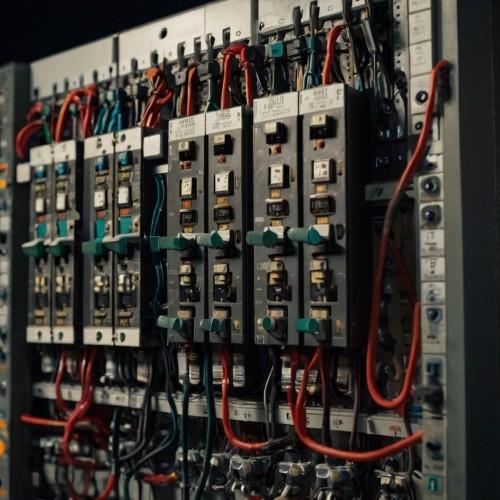The air circuit breaker market is expected to witness significant advancements and growth through 2031. As industries and utilities continue to expand, the need for reliable and efficient electrical protection systems becomes more critical. Air circuit breakers (ACBs) are designed to protect electrical circuits from overloads, short circuits, and other fault conditions, ensuring the safety of power distribution networks across various sectors. As energy demands rise and safety regulations tighten globally, the ACB market is set for considerable growth.
Drivers of Market Expansion
The growing demand for electricity, especially in developing regions, is one of the primary drivers for the air circuit breaker market. Rapid urbanization, industrialization, and population growth are leading to an increased need for energy. In response, the development of reliable power grids and the protection of electrical systems are becoming increasingly important. Air circuit breakers offer a crucial role in maintaining the safety of electrical infrastructure by quickly interrupting the flow of electricity in the event of a fault, preventing further damage to both equipment and infrastructure.
Additionally, the rise of renewable energy sources is influencing the market. As countries worldwide transition towards more sustainable energy sources like wind, solar, and hydropower, the demand for advanced protection systems in renewable energy plants and grid connections grows. ACBs are essential in ensuring the stability of these renewable energy systems by safeguarding electrical components from short circuits and other faults that can occur during the integration of renewable sources into the main grid.
Technological Developments and Innovations
Technological advancements in air circuit breakers are playing a pivotal role in driving market growth. One major trend in the market is the development of "smart" ACBs, which are equipped with advanced monitoring systems and remote operation capabilities. These smart circuit breakers can provide real-time data on circuit conditions, offering operators the ability to perform predictive maintenance and reduce the risk of failures. As industries embrace the Internet of Things (IoT) and automation, ACBs that integrate seamlessly into these systems are expected to gain widespread adoption.
Another innovation in the air circuit breaker market is the improvement in arc-quenching technology. Traditional ACBs relied on air as the medium for extinguishing the arc during operation, but new developments have led to enhanced arc suppression techniques that increase the efficiency of fault clearance. These technological advancements make ACBs more reliable, longer-lasting, and safer for both industrial and residential applications.
Moreover, there is a growing emphasis on energy-efficient products. Manufacturers are increasingly focusing on developing air circuit breakers that not only provide reliable protection but also consume less energy during operation. These energy-efficient ACBs align with global sustainability efforts to reduce energy consumption and lower the environmental impact of electrical systems.
Regional Outlook and Market Opportunities
The air circuit breaker market is expanding globally, with particular growth anticipated in the Asia-Pacific region. As countries such as China, India, and Japan continue to invest heavily in infrastructure development, the demand for air circuit breakers in these regions is increasing. These countries are experiencing rapid industrialization, which is driving the need for robust electrical systems that can prevent faults and maintain stability.
In North America and Europe, the market is being driven by the replacement of aging electrical infrastructure and the integration of renewable energy sources. Both regions are investing in grid modernization projects, which include the installation of advanced protection systems such as air circuit breakers. These investments, along with the push for more energy-efficient solutions, are expected to further propel the demand for ACBs in these regions.
Conclusion
The air circuit breaker market is set to experience significant growth by 2031, driven by technological advancements, increasing demand for reliable electrical systems, and the ongoing expansion of renewable energy. As industries and governments continue to prioritize safety, efficiency, and sustainability, the role of air circuit breakers will become even more crucial in safeguarding electrical systems. The market will benefit from innovations that enhance performance, reliability, and energy efficiency, ensuring that air circuit breakers remain integral to the future of power distribution worldwide.



